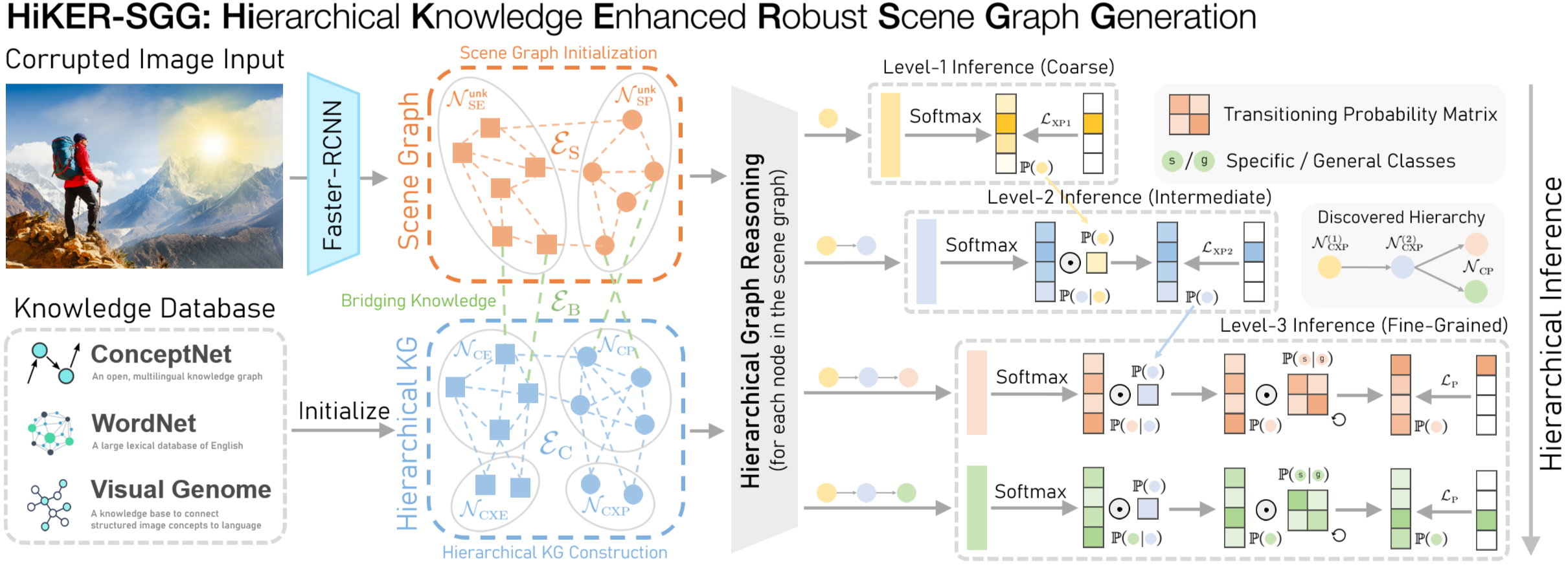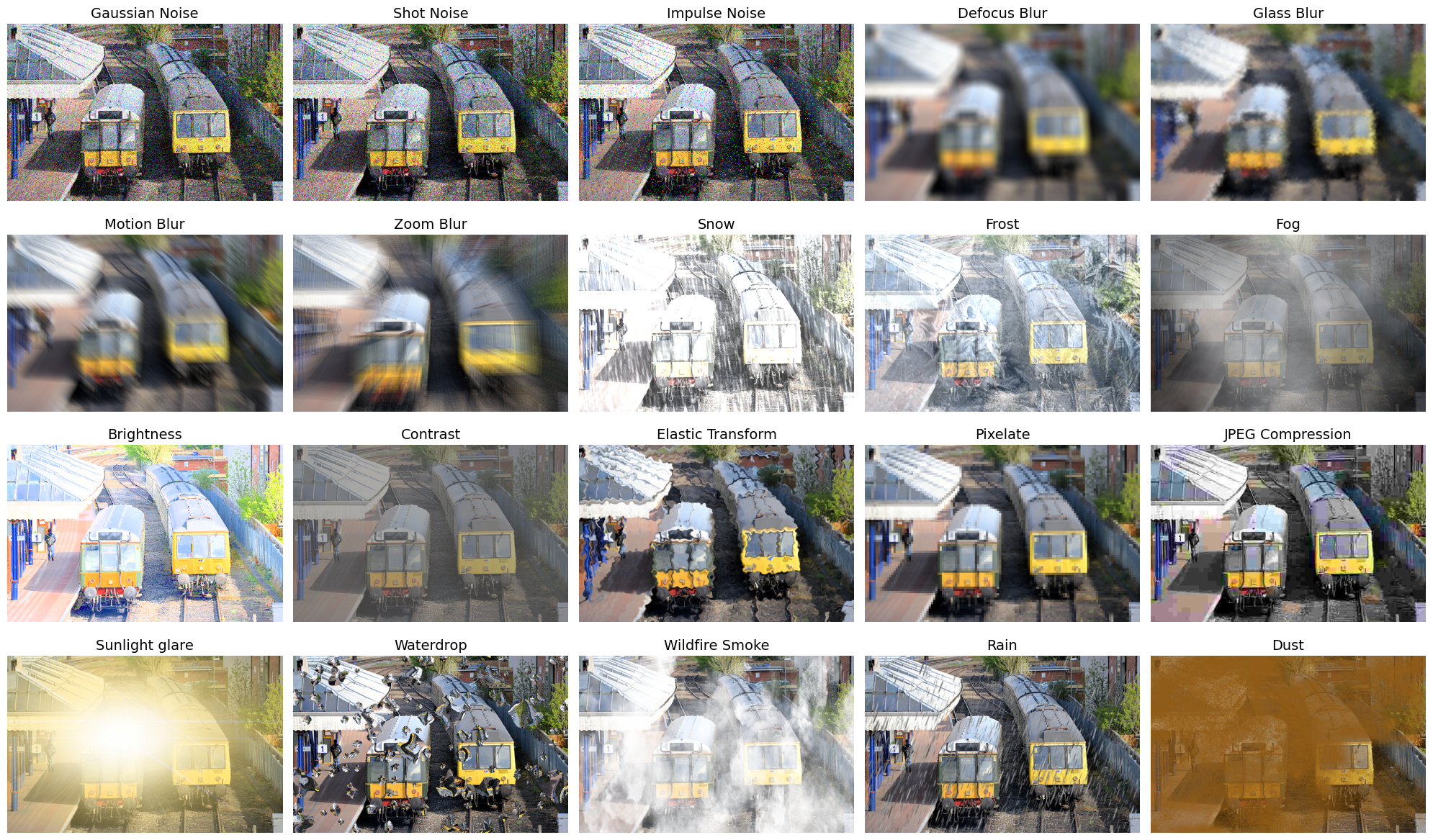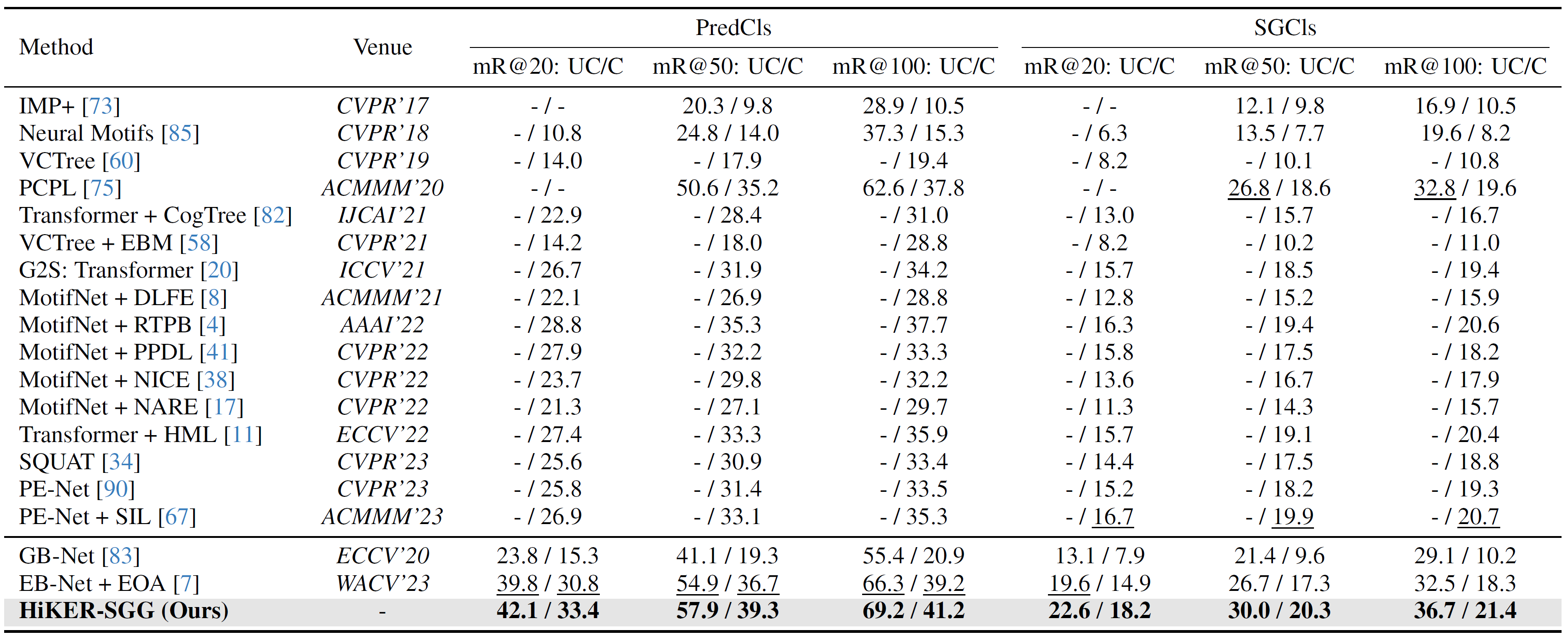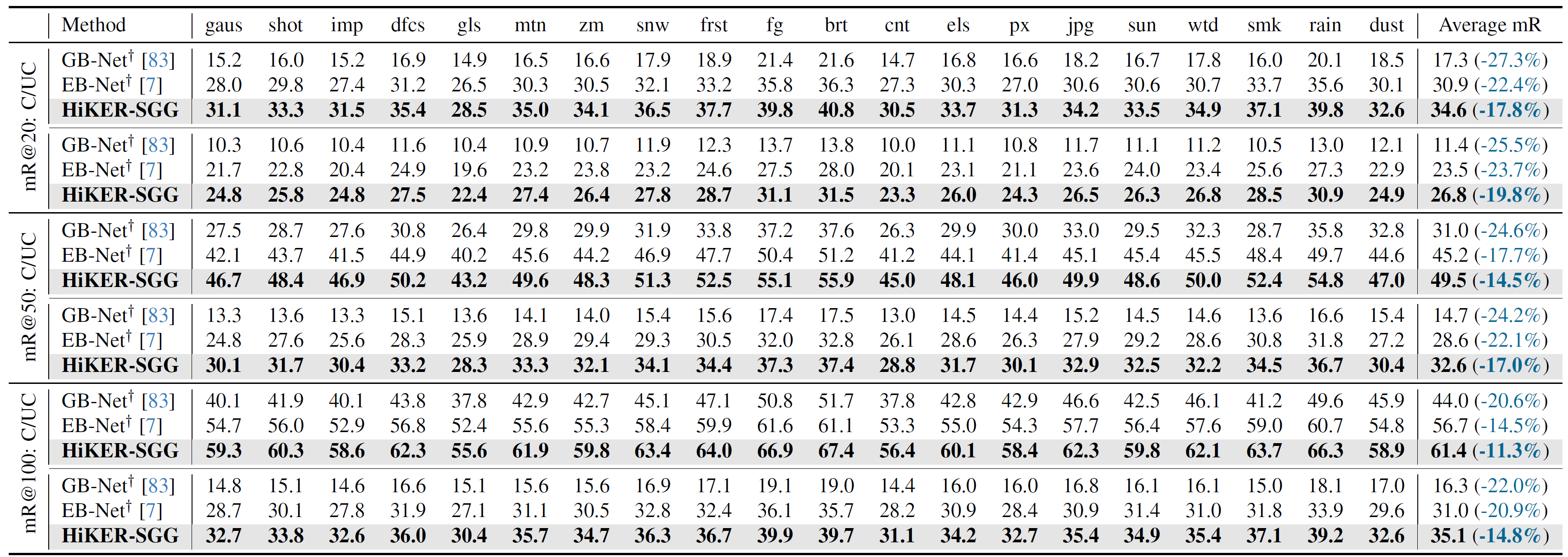HiKER-SGG: Hierarchical Knowledge Enhanced Robust Scene Graph Generation




Being able to understand visual scenes is a precursor for many downstream tasks, including autonomous driving, robotics, and other vision-based approaches. A common approach enabling the ability to reason over visual data is Scene Graph Generation (SGG); however, many existing approaches assume undisturbed vision, i.e., the absence of real-world corruptions such as fog, snow, smoke, as well as non-uniform perturbations like sun glare or water drops. In this work, we propose a novel SGG benchmark containing procedurally generated weather corruptions and other transformations over the Visual Genome dataset. Further, we introduce a corresponding approach, Hierarchical Knowledge Enhanced Robust Scene Graph Generation (HiKER-SGG), providing a strong baseline for scene graph generation under such challenging setting. At its core, HiKER-SGG utilizes a hierarchical knowledge graph in order to refine its predictions from coarse initial estimates to detailed predictions. In our extensive experiments, we show that HiKER-SGG does not only demonstrate superior performance on corrupted images in a zero-shot manner, but also outperforms current state-of-the-art methods on uncorrupted SGG tasks.
To standardize and evaluate SGG robustness, we create a corrupted Visual Genome (VG-C) benchmark, which comprises 20 corruption types designed to simulate realistic corruptions that may occur in real-world scenarios. Specifically, the first 15 types of corruption introduced by ImageNet-C are widely recognized as standard benchmarks for evaluating robustness. To further align with real-world scenarios, we introduce 5 additional types of natural corruption to our evaluation: sun glare, water-drop, wildfire smoke, rain, and dust.



blue
when compared to the mean recall on clean images. †We evaluate these methods using the codes provided by the authors.
red
dashed lines denote undetected predicates, solidred
lines denote incorrect predictions, and solidgreen
lines indicate correct predictions. For an easier comparison, predicates correctly predicted by our method but incorrectly by GB-Net are highlighted indark green
.@inproceedings{zhang2024hiker,
title={HiKER-SGG: Hierarchical Knowledge Enhanced Robust Scene Graph Generation},
author={Zhang, Ce and Stepputtis, Simon and Campbell, Joseph and Sycara, Katia and Xie, Yaqi},
booktitle={Proceedings of the IEEE/CVF Conference on Computer Vision and Pattern Recognition},
pages={28233--28243},
year={2024}
}